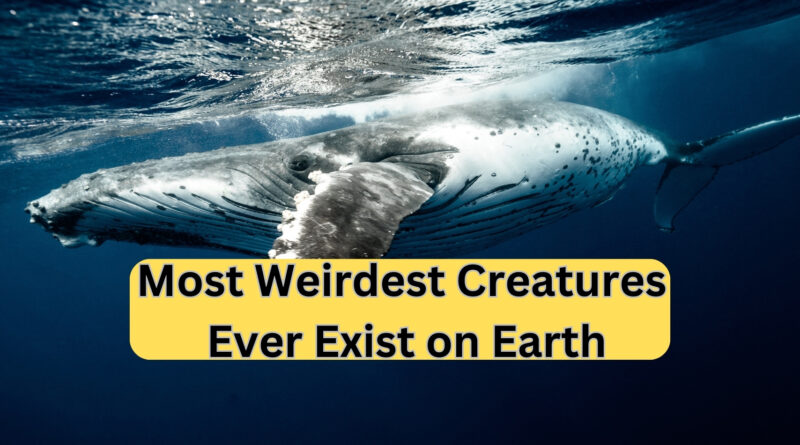In the vast realm of Earth’s diverse ecosystems, nature has proven time and again that it’s an artist of the bizarre. From the depths of the oceans to the densest jungles, the world is home to some of the most peculiar creatures that challenge our understanding of life itself. In this article, we will embark on a journey to explore the most bizarre and extraordinary creatures that have ever existed on our planet.
Unveiling the Oddities
1. Axolotl: The Eternal Juvenile
The axolotl, often referred to as the “Mexican walking fish,” is a unique amphibian that retains its juvenile features throughout its entire life. With its frilly external gills and ability to regenerate lost body parts, the axolotl is indeed a marvel of nature.
2. Narwhal: The Unicorn of the Sea
Known as the “unicorn of the sea,” the narwhal possesses a long, spiral tusk extending from its head. This tusk is actually an elongated tooth and can reach lengths of up to 10 feet. Scientists believe it’s used for various purposes, including communication and breaking through ice.
3. Blobfish: The Gelatinous Enigma
Deep within the abyssal depths of the ocean resides the blobfish, a gelatinous creature that appears quite different from its surface-dwelling counterparts. Its saggy, loose skin helps it withstand the extreme pressure of its habitat, making it a true oddity of the deep sea.
4. Aye-Aye: Madagascar’s Curious Lemur
Found in Madagascar, the aye-aye is a nocturnal primate with unusually long fingers, particularly the slender, elongated middle finger. This finger serves as a tool to extract insects from tree bark, showcasing nature’s ingenious adaptations.
5. Star-Nosed Mole: Master of Sensation
Residing in North America, the star-nosed mole possesses a unique snout adorned with 22 fleshy appendages that resemble a star. This intricate nose helps it detect prey through touch, showcasing its adaptation to a life spent mostly underground.
6. Platypus: A Mammal of Many Facets
Native to Australia, the platypus is a remarkable mammal that lays eggs, possesses a duck-like bill, and sports webbed feet. Its mishmash of features defies conventional categorization, making it a true enigma of the animal kingdom.
Diving Deeper: Extraordinary Adaptations
7. Mantis Shrimp: The Technicolor Hunter
With the ability to perceive polarized light and possess one of the fastest strikes in the animal kingdom, the mantis shrimp is a marvel of both color perception and predation prowess.
8. Fossa: Madagascar’s Top Predator
The fossa, endemic to Madagascar, is an agile and slender predator that climbs trees with ease. Its mix of feline and mongoose-like traits showcases the wonders of evolution in unique island ecosystems.
The Wonders of Evolution
9. Sloth: The King of Slow
Living life in the slow lane, sloths are arboreal mammals known for their leisurely lifestyles and unique adaptations for life in the treetops. Their unhurried nature reminds us that survival doesn’t always belong to the swift.
10. Hagfish: Nature’s Slime Factory
Hagfish are primitive marine creatures that produce copious amounts of slime as a defense mechanism. This gooey adaptation helps them escape the clutches of predators in the most unusual yet effective way.
What is the weirdest animal discovered?
What is an animal no one knows about?
While there are countless known animal species, the world’s vast and unexplored ecosystems likely harbor many undiscovered creatures. These elusive species, often lurking in remote and uncharted regions, have yet to be documented by scientists or brought to public attention. These animals might possess unique adaptations and behaviors that remain hidden from human knowledge.
For instance, deep within the unexplored depths of the oceans, there could be intriguing marine organisms with adaptations we can’t even fathom. Similarly, in the dense and remote rainforests, countless insects, amphibians, and small mammals could be awaiting discovery. Nature’s surprises continue to astonish us, and it’s entirely possible that some truly remarkable and unknown animals are still out there, awaiting their moment to be unveiled to the world.
Conclusion
In the tapestry of life on Earth, the most peculiar threads often weave the most fascinating stories. The creatures we’ve explored in this article are a testament to nature’s boundless creativity and the astonishing variety of life that exists on our planet. From the depths of the ocean to the canopies of the rainforests, these bizarre beings remind us that the beauty of life lies in its endless diversity.
FAQs
- Are these creatures real or just myths? All the creatures mentioned in the article are real and have been extensively studied by scientists.
- Where can I find these weird creatures? Many of these creatures have specific habitats, ranging from deep oceans to remote islands. Research and wildlife documentaries are good ways to learn more about them.
- Do these creatures serve any specific purpose in their ecosystems? Yes, each of these creatures plays a unique role in its ecosystem, contributing to the balance of nature in various ways.
- Are any of these creatures endangered? Yes, some of them are indeed endangered due to habitat loss, climate change, and other human-related factors.
- Can I keep these creatures as pets? While some might be kept in captivity, many of these creatures have specialized needs that make them challenging to care for properly. It’s important to prioritize their conservation in the wild.
